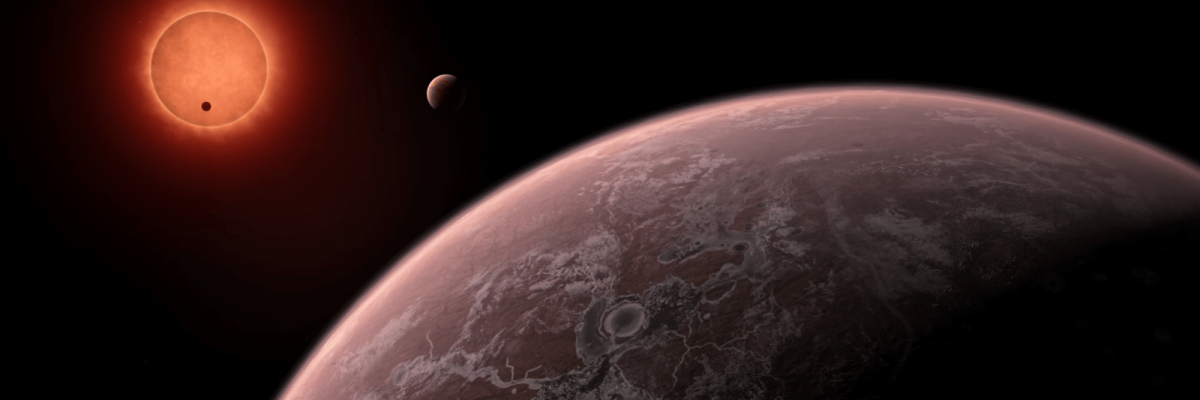There are seven in red dwarf TRAPPIST-1. In early 2018 scientists came to the conclusion that three of them are located in the habitable zone, that is conditions prevailing there are close to those on the...
There are seven exoplanets in red dwarf TRAPPIST-1. In early 2018 scientists came to the conclusion that three of them are located in the habitable zone, that is conditions prevailing there are close to those on the Earth, specifically, they ensure the presence of liquid water.
The first three planets (TRAPPIST-1b, TRAPPIST-1c, TRAPPIST-1d) near the red dwarf 2MASS J23062928-0502285 were discovered by scientists in 2015 with the help of TRAPPIST – a small Belgian telescope installed at the Chilean observatory La Silia. After that, the system situated in the constellation of Aquarius some 40 light years away from the Earth was named TRAPPIST-1. Early in 2017, researchers discovered a further 4 planets - e, f, g, h.
Planets b, c and d are located in the habitable zone, the heat coming from the star is sufficient for the presence of liquid water on the surface.
The planets’ density varies between 0.61 and 1.02 of the average density of the Earth. Planets TRAPPIST-1b and TRAPPIST-1c – the closest ones to the star - may have a rocky core and the atmosphere denser than that of the Earth.
TRAPPIST -1d, the lightest planet in the system – is 30-fold lighter than the Earth. TRAPPIST-1e is unlikely to have liquid water or glaciers and it has an iron core since its density is several-fold higher than that of the Earth. In terms of all other parameters TRAPPIST-1e is more similar to the Earth than the other ones.
There cannot be any liquid water or developed atmosphere on the surface of the other four planets as they are too far from the star. Researchers assume that sufficiently heavy elements found in the low heights make up the atmosphere of TRAPPIST-1b, 1c, 1d, 1e and 1f.
It is not quite clear whether any form of life can exist in the TRAPPIST-1 system. There occur, from time to time, the star’s powerful outbursts in the system which can sweep away the atmosphere from the planets that happen to be on the way of the energy outbursts. Moreover, the four planets may have constant volcanic outbursts and their surface is burning hot.
Research teams the world over continue to monitor the system via the Hubble, the Keller and other telescopes. Scientists pin great hopes on the soon-to-come launch of the IR James Webb telescope whose mirror is six-times the size of that on the Hubble.
Share this with your friends!






Be the first to comment
Please log in to comment